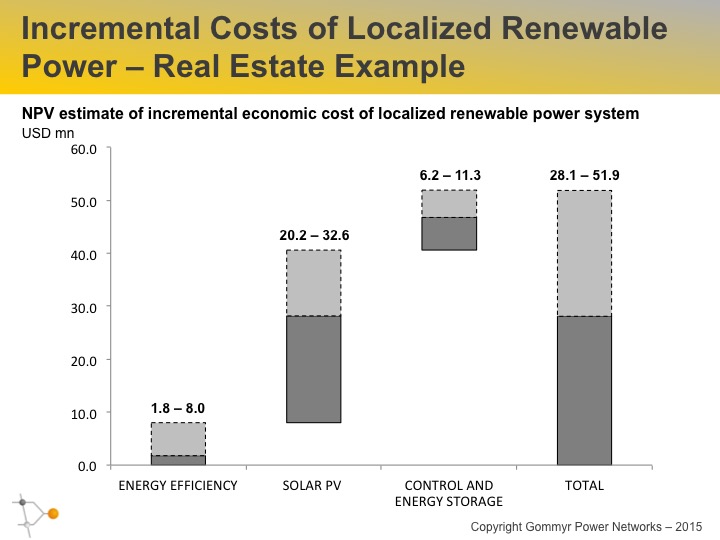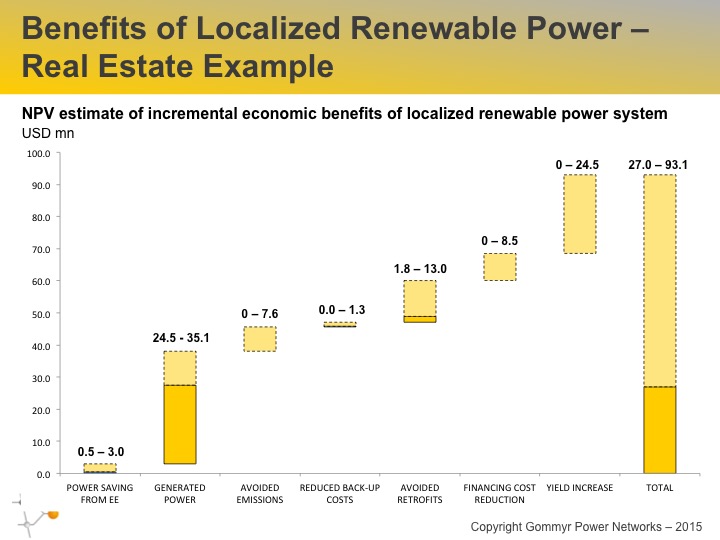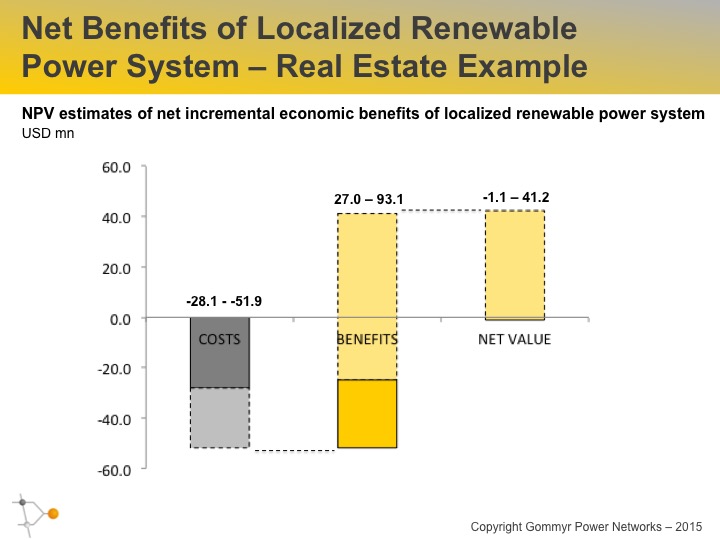
Renewable Microgrid Value Creation – a Real Estate Development…
An interesting application of renewable microgrids is for enhancing value in real estate developments. There is increasing demand and interest in sustainable buildings, and real estate developers are exploring options on how to meet this demand and create additional value for their clients and themselves. A renewable microgrid that is acts as localized renewable energy system integrated into the project development can be a compelling alternative for developers looking to maximize their offering and value.
The decision on whether in incorporate localized sustainable energy is typically driven by the cost-benefit for the project. The perceived risks and additional capital requirements for the investment in the system are additional barriers that need to be overcome (or sufficient value created to incentivize developers to adopt a renewable microgrid).
The costs of sustainable energy can in general be grouped into demand-oriented costs (in addition to baseline energy efficiency measures related to building standards), supply / generation related costs and the control and energy storage that provides system stability and reliability.
This example is for a holiday development on the mainland of Greece. Given the local renewable resource, the power generation is fully PV based and consists of 12-15MW of rooftop mounted systems and includes energy efficiency measures (beyond already stringent minimum EU new-build standards) as well as energy storage and control to provide back-up power.
An overview of the incremental cost of a localized renewable energy solution is given below:

The costs will vary depending on the actual project characteristics as so a indicative range is used.
In terms of benefits, an overview and estimate of the net present value of the benefits is given below:

Note that many benefits have a large potential range that depends on project specifics such as baseline construction costs, target client market and project financing structure. Depending on the case and situation, some benefits may or may not be applicable.
These benefits are based purely on the underlying technical and economic project details and do not include any subsidies, feed-in-tariffs, or any reselling or surplus power to the grid through a net metering scheme. All of these mechanisms could provide additional value to an end-user or investor.
The net benefits of a localized renewable energy system are shown below –

In this example, the localized renewable energy system breaks even (including the cost of capital of 8% as it is based on net present values) in the worst case and could provide up to twice the value of the investment costs in a best case scenario.
Special thanks – this analysis was performed in conjunction with Matthew Ulterino of Rodin Consulting (www.rodinconsulting.co.uk).